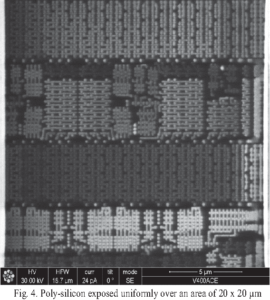 Extract PLD IC Source Code
Extract PLD IC Source Code
Extract PLD IC Source Code from PLD chip memory, crack PLD IC tamper resistance system and disable the security fuse bit, readout the firmware from PLD IC memory;

Extract PLD IC Source Code from PLD chip memory, crack PLD IC tamper resistance system and disable the security fuse bit, readout the firmware from PLD IC memory
Obviously, in a floating gate memory cell, the floating gate itself cannot be accessed. Its voltage is controlled through capacitive coupling with the external nodes of the device. Often, the floating-gate transistor is modelled by a capacitor equivalent circuit called the capacitor model. In practice, write/erase characteristics for many EEPROM/Flash memories are close to that of a charge/discharge of a capacitor. Meanwhile there are some differences in how the charge/discharge process takes place in real memory cells. There is an initial delay between the time the voltages are applied to the cell, and the charge starting to be removed or injected.
This delay is caused by the need for very high electric fields to be created inside the floating-gate transistor to start the injection or tunnelling process. Some EEPROM cells have been reported to have nonuniformity during the erase operation. As a result, it might take longer to erase a half-charged cell than a fully-charged cell. In addition, an ideal capacitor discharges exponentially: q = q0 e−t. Applied to the floating gate, that would mean that after t=10 the charge is totally removed from the cell.In practice this doesn’t happen, because the parameters of the cell’s transistor change as the charge is removed from its floating gate. All the above-mentioned problems could seriously affect data remanence in floating-gate memories.
The main difficulty with analysis of the floating-gate memory devices, especially EEPROM and Flash, is the variety of different designs and implementations from many semiconductor manufacturers. There are hundreds of different types of floating-gate transistor, each with its own characteristics and peculiarities. It means that for security applications where data remanence could cause problems, careful testing should be applied to the specific non-volatile memory device used in the system.